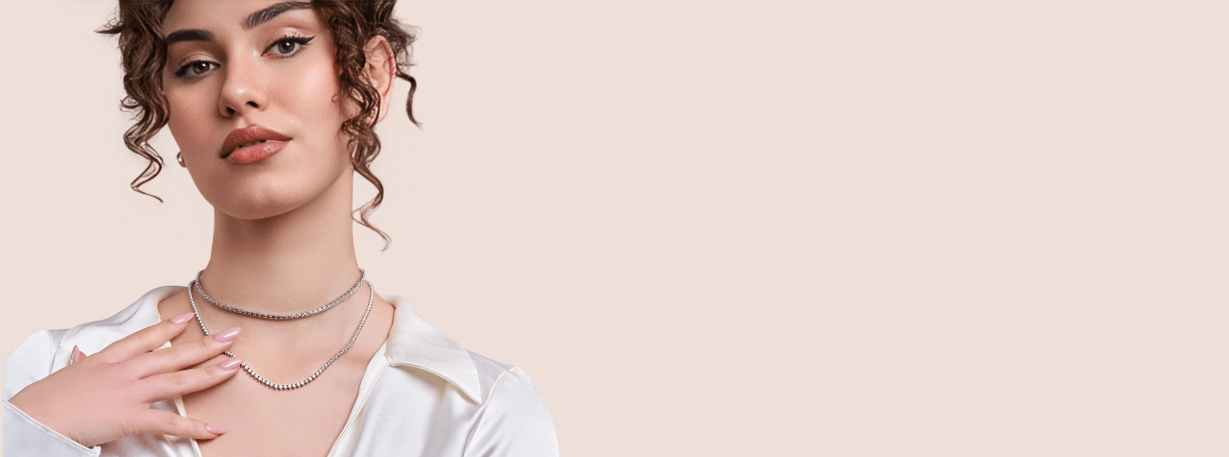Choosing the perfect diamond engagement ring is one of the most meaningful purchases you’ll ever make. It’s more than just a piece of jewellery – it’s a symbol of love, commitment, and personal style that your partner will cherish for a lifetime. With countless options available, selecting the right ring can feel overwhelming. This comprehensive guide is designed to help you make an informed and confident decision, every step of the way.
1. Understand the 4 Cs of Diamonds
Before browsing rings or visiting a jeweller, it's crucial to familiarise yourself with the 4 Cs – Cut, Clarity, Colour, and Carat – the global standard for assessing diamond quality:

-
 Cut: The cut determines how brilliantly a diamond reflects light. A well-cut diamond sparkles beautifully, regardless of its size.
Cut: The cut determines how brilliantly a diamond reflects light. A well-cut diamond sparkles beautifully, regardless of its size.
-
 Clarity: This refers to the presence (or absence) of natural flaws or inclusions. Higher clarity means fewer imperfections.
Clarity: This refers to the presence (or absence) of natural flaws or inclusions. Higher clarity means fewer imperfections.
-
 Colour: Diamonds range from colourless (graded D) to light yellow or brown (graded Z). Colourless diamonds are rarer and generally more valuable.
Colour: Diamonds range from colourless (graded D) to light yellow or brown (graded Z). Colourless diamonds are rarer and generally more valuable.
-
 Carat: Carat is the measure of a diamond’s weight. While a higher carat may mean a larger stone, brilliance and beauty depend just as much on cut.
Carat: Carat is the measure of a diamond’s weight. While a higher carat may mean a larger stone, brilliance and beauty depend just as much on cut.
Knowing these characteristics allows you to balance quality and cost to get the best value.
2. Set a Thoughtful Budget
There’s no fixed rule on how much to spend on an engagement ring. What matters is choosing a budget that reflects your financial comfort and priorities. Decide what’s most important – whether it’s carat weight, clarity, or the overall design – and allocate your budget accordingly.
Tip: Consider a slightly lower carat (e.g., 0.90 instead of 1.00) to save significantly while keeping a similar look.
3. Select the Right Diamond Shape
Diamond shape plays a major role in a ring’s overall appearance and the impression it gives. Some of the most popular shapes include:
- Round Brilliant: The classic choice known for maximum sparkle.
- Princess Cut: A modern square shape with sharp angles.
- Cushion Cut: Romantic and vintage-inspired with soft edges.
- Oval and Pear: Elegant and elongating on the finger.
-
Emerald Cut: A timeless rectangular shape with a clean, sophisticated look.
Think about your partner’s style when selecting a shape – are they classic, modern, bold, or elegant?
4. Choose a Setting that Suits the Diamond
The setting enhances the beauty of the diamond and secures it in place. Common engagement ring settings include:
- Solitaire: A timeless design that showcases the diamond on its own.
- Halo: A circle of smaller diamonds surrounding the centre stone, adding extra sparkle.
- Pavé: A band encrusted with tiny diamonds for added shimmer.
-
Three-Stone: Symbolising your past, present, and future together.
Choose a setting that reflects your partner’s personality and lifestyle.
5. Pick the Right Metal for the Band
The metal of the band plays a big role in the ring’s aesthetic and durability. Popular choices include:
- Platinum: Strong, hypoallergenic, and naturally white.
- White Gold: A more affordable alternative to platinum with a similar appearance.
- Yellow Gold: Classic and warm – perfect for vintage styles.
-
Rose Gold: Trendy and romantic with a pinkish hue.
Observe the type of jewellery your partner currently wears – that’s often the best clue.
6. Consider Lifestyle and Practicality
If your partner leads an active lifestyle or works with their hands, opt for a ring with a secure, low-profile setting. Platinum may also be a better choice for everyday durability. A practical design will ensure the ring is worn comfortably and safely, every day.
7. Add a Personal Touch
Customizing the engagement ring adds sentimental value. Consider personalization options such as:
- Engraving a special message or date
- Adding birthstones
-
Designing a bespoke ring from scratch
Personal touches transform a beautiful ring into a meaningful treasure.
8. Buy from a Reputable Jeweller
Whether buying online or in-store, ensure you’re working with a trusted, certified jeweller. Look for:
- GIA or IGI certification for diamonds
- Transparent pricing and grading reports
- Fair return and warranty policies
-
Excellent customer service and verified reviews
A good jeweller should be willing to educate, advise, and guide you – not pressure you.
9. Don’t Forget the Ring Size
Make sure you know your partner’s ring size to avoid resizing later. Borrowing a ring they wear on their ring finger (if possible) or asking a close friend or family member for help can be useful strategies. Some jewellers also offer a free resizing service after purchase.
Final Thoughts
Choosing a diamond engagement ring is both a heartfelt and thoughtful process. It’s a symbol of your love story – unique, beautiful, and everlasting. By understanding the basics, setting a budget, and considering your partner’s style and lifestyle, you’ll be well on your way to finding the perfect ring.
The best engagement ring isn’t necessarily the most expensive – it’s the one chosen with care, intention, and love.









